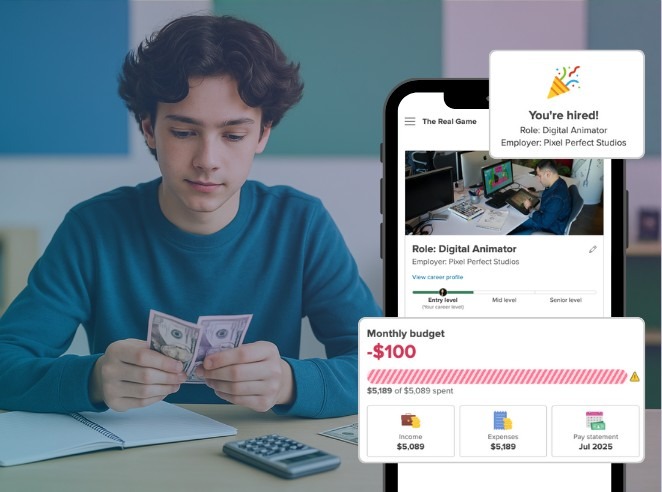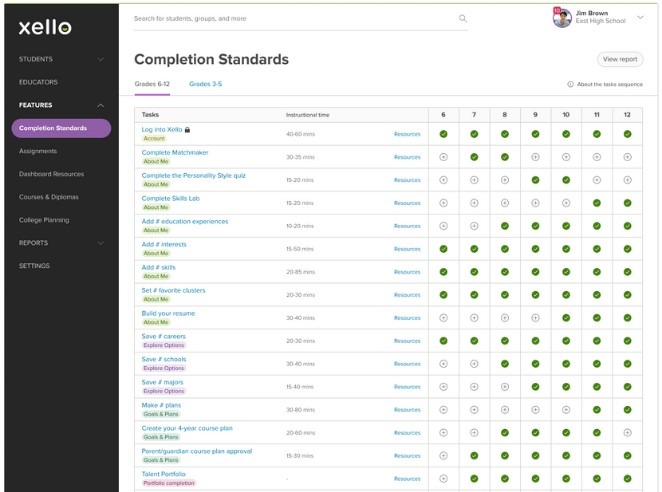Empower Students to Become Future-Ready Through CTE Pathways

Through CTE learning, students who find themselves career-bound can prepare for a successful future.
As we proceed through the 21st century, there are certain things we are seeing more often in schools. For instance, we notice more districts going all-in on the 1:1 initiative—a computer device for every student in the classroom. Teaching straight from the textbook is becoming passé as teachers venture away from the prepared text during their instruction.
Out of all the change we see happening in the classroom, one other thing is extra clear: High schools are better preparing students for the workforce through opportunities in career and technical education (CTE).
Remember Back in the Day…
Not too long ago, there were specific classes offered for high school students that had no interest in pursuing college after graduation. These courses were viewed in a counterproductive way because they were mandatory for all students to attend.
Ring a bell? They were called vocational classes and consisted of teaching students home economic skills, auto mechanic abilities, and woodshop training. At the very least, these classes did provide valuable skills for students who were “thinking” about entering the job field in the near future.
Vocational Classes with a 21st-Century Spin
While these vocational courses are still being offered today in most high schools, there have been additions to the curriculum. As technology is touching every aspect of education and the workplace nowadays, high school students are also given the chance to enroll in CTE courses.
Think of it as the evolution of the traditional vocational classes, but instead is focused on nurturing tech- and career-based skills for students right from the classroom. These students may or may not go on to college, that is their choice, but they are acquiring skills that could pay off immediately with employment in a career that they enjoy.
Unpacking CTE: Skills-Based vs. Theory-Based Learning
Most current courses in high school deal with theory-based learning. The teacher, more or less, offers their thoughts on a subject as it corresponds with what is published in the textbook as the students listen.
On the other hand, skills-based learning is associated with CTE classes as specific career skills are taught to the students in a hands-on approach. These courses are highly specific to the occupation that is chosen, but they are also very versatile as they can apply to many areas of the job.
CTE is usually split into 16 career clusters for occupations that are in high demand in fields such as finance, sales, government, health science, information technology, and construction. Training is provided for a specific occupation in an effort to provide that student valuable skills in a certain field that will make them employable in the near future. It gives the student the experience they will need to get hired and start their career.
What Exactly Are CTE Courses?
CTE is being taught in some public school districts as early as middle school, but usually it appears to currently be offered more in the high school years. However, it is starting to emerge earlier and in some districts, CTE courses are available to elementary students as well.
Qualified educators are teaching skill-based courses to students in an effort to prepare them for life outside of school. In the process, they are providing them valuable experience that can get them hired within many industries. Almost half of all the high school students in the United States (about nine million) have taken a CTE course recently, so it is much more prevalent already than you may have thought.
In most high schools, classes are being taught on traditional theory. CTE focuses much more on individualized skill-based classes with hands-on-experiences. The skills they are learning will be needed in their future employment because most of these jobs require previous experience and they are getting it in a nontypical classroom setting.
While the usual high school course will require learning from the textbook and memorizing information, CTE focuses on developing talents and improving upon them.
Academic planning is completed usually when you sit down with a counselor or someone similar and you put together a list of courses that will net you a degree or certification in the long run.
When offering CTE to students, it is all about the academic planning and career planning all in one.
CTE offers specific career guidance to those students that either know what they already want to do in life or those that are in need of someone setting a bit of a pathway for them. To put it simply, CTE provides students with skills that will benefit them in numerous possible careers.
Each CTE student should have a personalized career plan in place that stems from their interests and abilities. The school then provides the needed courses over possibly many years to give the student the abilities needed to succeed in the chosen career field. In fact, the school should be lending a hand, when possible, on placing the student into a job after their education is nearing completion.
How to Introduce CTE Learning to Your District
It really does take a village to educate children. This is especially true when following the CTE pathway. Teachers, counselors, administrators, and parents all have to be on board to support all students of all pathways. In addition, many talented individuals from the community must be willing to come in and share their skills with the students.
With a little bit of planning and collaboration, the whole community could join in on empowering students to follow their dreams through CTE.
Myths Associated with CTE Learning
Anytime there is change, there are naysayers that do not hop on board no matter how good something is. CTE learning is no different. The critics will claim that this type of education is only made for boys. However, about half of the students that have taken CTE courses are girls. Thinking that males are the only ones interested in technology, health sciences, manufacturing, architecture, and other career fields is extremely close-minded.
Vocational courses back in the day were taken more often by those students that were low-income students and students of color who were deemed “not college material”. CTE is, unfortunately, being labeled the same way even though it is becoming more balanced across the board as all types of students seem to be interested in this style of education that focuses on planning for a specific career.
Lastly, another misconception is that CTE encourages students not to go on to college. But, in fact, it just provides another option. Many students that follow the CTE pathway do proceed to college. Others take what they learned and get a certification or earned credentials in a short amount of time that will land them a good-paying job in various career fields without the need for a four-year bachelor’s degree. For instance, an elementary school teacher with a bachelor’s degree is expected to earn about $1.7 million in their total lifetime. Medical technicians are estimated to earn more than $2 million during their career and many of them get their jobs through short certification courses.
One Small Step for Man, One Giant Leap for Education
Education needs a bit of an overhaul. For the last few centuries, there has been very little change. The only real difference from a one-room schoolhouse is now kids are placed in different classrooms based on age groups. Everyone still learns the exact same things and is taught the exact same way.
CTE is the next step for individualized education as students are placed on certain career paths based on their interests and abilities. This means that education is no longer a one-size-fits-all industry. Instead, courses are picked for students based on the information they have provided. This means that teachers, counselors, and administrators are all working hand in hand as they create a customized education and career plan. Being successful in a career does not always require a college degree and with CTE programs, more students are realizing they have a chance at a good future.



